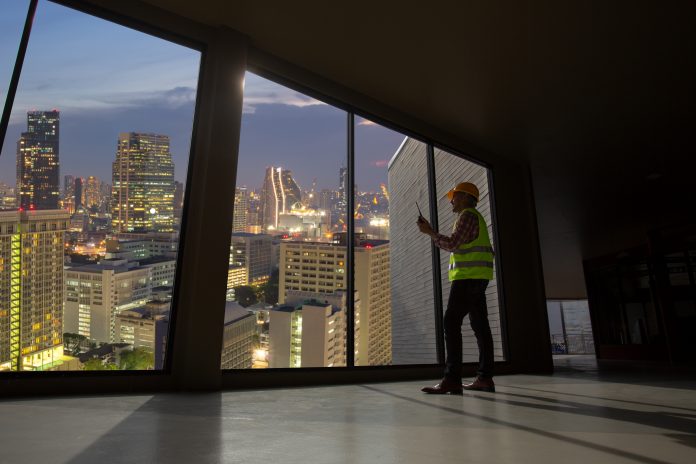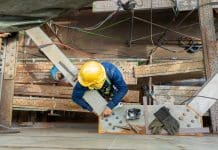In this article, Actuate UK, the engineering services alliance, explores the updated Building Safety Act, what this means for the engineering sector, and how the industry can be held responsible for upholding safer buildings and thrive
The Grenfell disaster was a dark hour for the UK construction industry. It exposed the system’s failures and marked the construction industry against the lowest common denominator, thus frustrating those – and there are many – who strive for high standards of work and professionalism in the industry.
Dame Judith Hackitt’s independent review examined the systemic failures that led to the disaster and concluded that without proper reform of the system, these will be repeated. The Hackitt review made a series of recommendations which were all accepted by the Government and became the blueprint for the Building Safety Bill.
A healthy industry that delivers safe, productive and sustainable built assets
The Bill had a relatively smooth passing to become the Building Safety Act this April because everyone understood the importance of what it was set out to do. The Building Safety Act and its subsequent secondary legislation will create the new Building Regulatory Regime and restore confidence in the industry, not only for the public but for the industry itself.
The engineering services industry should not only wholeheartedly embrace these reforms but engage with the new Building Safety Regulator (BSR) and the Department for Levelling Up, Housing and Communities (DLUHC) to ensure that what needs to happen can happen and achieve the desired effect: a healthy industry that delivers safe, productive and sustainable built assets.
Engineering services contribute £125bn to UK GDP annually, and £600bn of GDP in the wider economy
Engineering services deliver design, construction and services for buildings and infrastructure that contribute some £125bn to the UK GDP annually and enable £600bn of GDP in the wider economy.
However, their contribution to the development of the building asset is usually invisible to the wider public. Actuate UK members bring together the companies and people who design, install, operate, maintain and refurbish key installations and fittings for lifts, escalators, ventilation, heating, water, electrical, lighting and lighting systems in buildings.
The sector covers a very diverse and vital professional expertise, and our industry is critical to delivering UK buildings and infrastructure, including homes, offices, schools and hospitals.
Building Safety Act: The ‘devil is in the detail’
Actuate recognises that the ‘devil is in the detail’. The Building Safety Act (BSA) although high level as a piece of legislation, it has set the key parameters of a new system where the line of responsibility is visible and accountable with legal implications.
It is widely understood that the detail of the underlining regulatory system will be embedded in secondary legislation and explained in guidance prepared by the Building Safety Regulator, currently being set by the Health & Safety Executive (HSE).
Actuate UK looks forward to working closely with HSE/BSR and has always advocated that the new body is well-supported and resourced to carry out its new overarching duties. An introduction of these duties is being made on the HSE website. Two very important BSR committees for our industries that are currently being set up: the Industry Competence Committee and the Building Advisor Committee.
HSE and DLUHC are putting together a new vocabulary to describe who is responsible under the new legislation
The detail of how the system will operate has started to be sketched through consultations this summer and autumn on the implementation of BSA and the foundations of the new regulatory system. Behind the attention-grabbing headlines of who pays the remediation costs, HSE and DLUHC have been putting together not just new regulations but a whole new vocabulary to describe who is responsible for what (using the term ‘dutyholder’), the level and scope of key roles, their legal obligations and how to gather and maintain key information.
Because the emphasis on many of the legal obligations will be on what is called ‘high risk buildings’ (HRBs), defined in BSA as over 18 meters (or seven storeys) high, there is a misconception in the industry that the new regulations will apply only to these buildings and especially residential dwellings. This may lead to the wider industry overlooking the aspects of the new system, which will apply to all buildings and aims to contribute to the cultural shift advocated by Dame Judith Hackitt.
What are some of the new key concepts which the industry needs to take notice of?
For the engineering services sector some stand out and they were discussed in the recent DLUHC consultation on implementing the new building control regime for higher-risk buildings and wider changes to the building regulations for all buildings.
Firstly, the duty to collaborate is very important for engineering services as it provides impetus for clients and key contractors to facilitate early supply chain engagement and input. Everybody agrees that it makes sense to discuss and plan all building elements together with the experts who will deliver them. Still, unfortunately, that has often been the exception and not the norm.
The proposed regulation puts clearly the obligation to: “all dutyholders during design and construction must: cooperate with other dutyholders (e.g. share information, have effective routes of communication and support other dutyholders in achieving compliance…”
Similar in importance is ensuring that dutyholders “and the people they appoint are competent (have the necessary skills, knowledge, experience and behaviours and where organisations are involved, the appropriate organisational capability) to carry out design work and building work they are engaged to do and only undertake work within the limits of that competence.”
There is a large part of work around defining and accrediting competencies which have already been taking place around the BSA, and Actuate UK members have an active role in developing their sector frameworks. In our response to the consultation, we stressed that the standards of competence should be set by each sector, but there is also a role for Government to reinforce robust validation at every stage.
Compliance needs to be clearly defined for companies to comply genuinely
Although the basic information by HSE and DLUHC has been provided in the consultation document, there is still more detail that is needed, and Actuate UK asked for further clarity to be provided with Guidance from the new Regulator as well as examples of what ‘good practice’ or ‘appropriate’ means in the context of the regulations.
For enforcement to be rigorous, compliance needs to be defined in such terms so that there is no ambiguity for the companies genuinely seeking to comply. This will also enable industry bodies to inform and provide further guidance to their members. With every new regulatory requirement, clear guidance should follow.
The Golden Thread should be expanded to all buildings
We also believe that the principles of the Golden Thread of information about a building, which is now a requirement for HRBs, will be useful for the life-cycle of any building; Actuate UK has advocated for the Golden Thread to be expanded to all buildings. With time, this new measure will be developed and become the norm as industry adjusts. Engineering services work across different types of buildings, therefore, the majority of the industry will become familiar with the Golden Thread and how to manage it.
Moreover, the public will be more re-assured if there is accurate and up to date information that will enable the right people at the right time to support compliance with building safety.
The Building Safety Act will create a culture of compliance and collaboration
The Hackitt report also highlighted the business practices that were complicit in the occurrences of construction or maintenance work being substandard or made without consideration for the wellbeing of the building’s occupants. “Cutting corners” can also be the result of an endemic abuse of sub-contractors with poor payment practices.
While the Building Safety Act is not addressing this directly, it will have a cultural impact, where compliance and collaboration could foster a business environment based on respect and trust across the supply chain. This has already started with initiatives such as the Building A Safer Future Charter, which takes a holistic approach on how main contractors should operate. Good practice shines across the whole of the building asset and the finished result is the best evidence of a thriving and societally responsible industry.

















